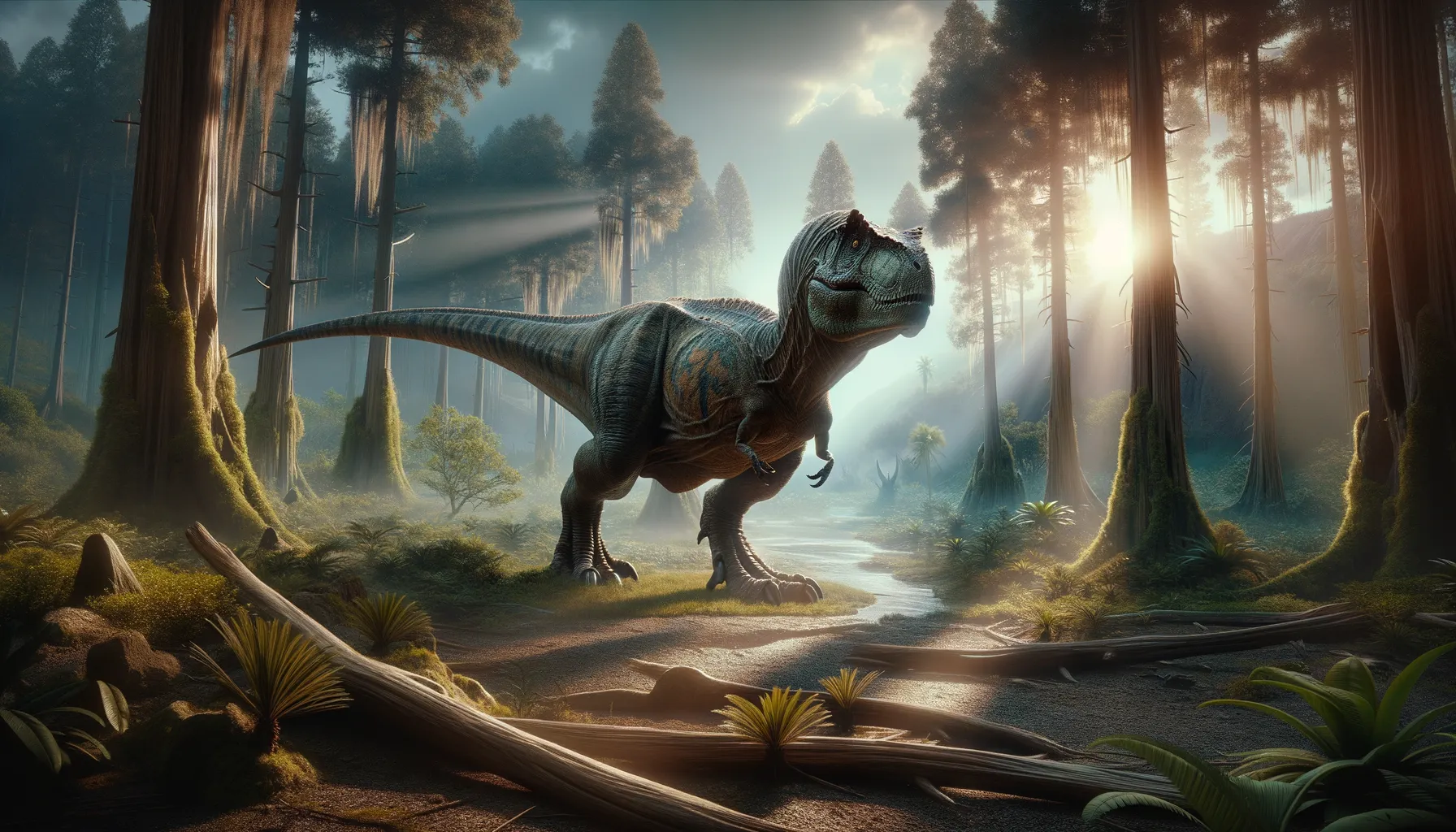
Crichtonsaurus
Armored survivor from the Cretaceous!
Period
Cretaceous
Length
Roughly 4 meters in length.
Height
Approximately 1 meter tall at the hips.
Weight
Estimated between 1500 and 2000 kg.
Crichtonsaurus was a small ankylosaurian dinosaur known for its heavily armored body and tail, which it used for defense against predators. Named in honor of Michael Crichton, it lived during the Cretaceous period in what is now China. Despite its size, Crichtonsaurus was a formidable creature, capable of surviving the harsh and competitive environment of its time.
Diet
Crichtonsaurus was herbivorous, feeding primarily on low-lying vegetation. It likely consumed ferns, cycads, and other plants available in its habitat. Its diet required strong jaws and teeth to process tough plant material.
Hunting
As a herbivore, Crichtonsaurus did not hunt other animals. Its primary activity was foraging for plants throughout the day. The species had to remain vigilant to avoid predators, relying on its armor for protection.
Environmental challenges
Crichtonsaurus faced numerous environmental challenges, including the need to find sufficient food in an ever-changing landscape. It also had to contend with predators like tyrannosaurs and other theropods. Climate variations could affect the availability of food, making adaptability crucial for survival. The species' heavily armored body provided a shield against many of these threats.
Speed
Likely slow due to its armored body.
Lifespan
Possibly around 20 to 30 years.
First discovery
First discovered in the Liaoning Province of China in 2002.
Fun Facts
- Crichtonsaurus was named in honor of the famous author Michael Crichton, who wrote Jurassic Park.
- This dinosaur lived approximately 100 million years ago during the early Cretaceous period.
- Crichtonsaurus was a herbivore, meaning it only ate plants.
- It belonged to the group known as ankylosaurs, which were well-known for their armored bodies.
- Fossils of Crichtonsaurus have been discovered in China, giving us a glimpse into its ancient world.
- Despite its heavy armor, Crichtonsaurus was relatively small, estimated to be only about 3 meters long.
- Researchers believe Crichtonsaurus used its armored body as protection against predators of its time.
Growth and Development
Crichtonsaurus underwent gradual growth from hatchling to adult, with juveniles displaying less robust armor. As it matured, its armor and skeletal structure would have become more pronounced. Growth rates might have varied based on environmental conditions and food availability. The dinosaur's development likely mirrored other ankylosaurids, reaching full maturity over several years.
Habitat
Crichtonsaurus inhabited forested areas rich in vegetation, providing ample food resources. Its environment included riverbanks and floodplains, which would support diverse plant life. This habitat allowed Crichtonsaurus to remain relatively concealed from predators. The lush landscapes of its time played a crucial role in its day-to-day survival.
Interaction with other species
Crichtonsaurus coexisted with various herbivorous and carnivorous dinosaurs. Its presence might have impacted the distribution of plant resources in its ecosystem. While not aggressive, its mere size and armor discouraged confrontation with other dinosaurs. Predators would have needed to carefully strategize to target Crichtonsaurus due to its defensive capabilities.
Natural lifespan
Crichtonsaurus likely lived up to 20 or 30 years in the wild.
Reproduction
Crichtonsaurus likely laid eggs, as suggested by related ankylosaurid species. Nesting sites would have been chosen for safety and proximity to vegetation. Parental care might have been minimal, with young relying on instinct and rapid growth. Reproduction was vital to maintain population numbers in a competitive ecological niche.
Social behaviour
Crichtonsaurus may have been a solitary creature, focusing on individual survival. Occasional group behavior could have occurred during foraging or migration. Social interactions with other species were likely limited to avoiding confrontations. Its primary focus was sustenance and defense.
Fossil locations
Fossils of Crichtonsaurus have been found primarily in the Liaoning Province of China. This area is known for rich deposits from the Early Cretaceous period. The discovery site has provided substantial insights into the diversity of ancient ecosystems. Continued excavations may reveal more about the life and habits of this armored dinosaur.
